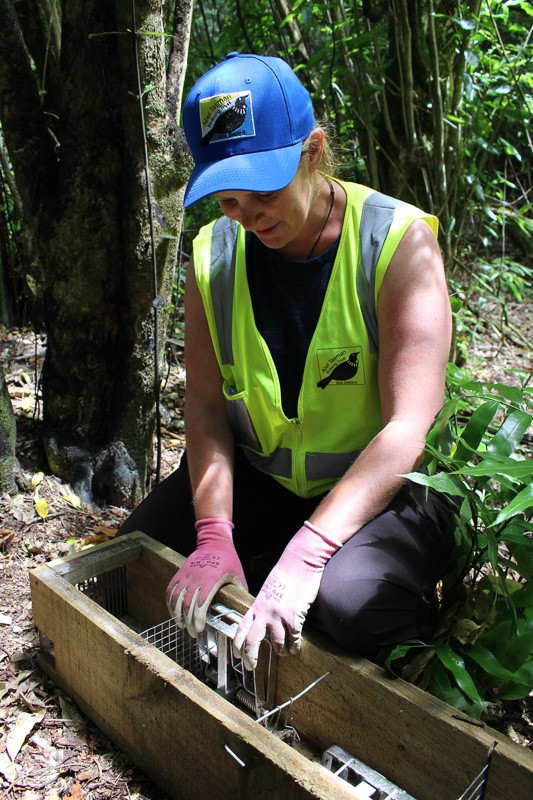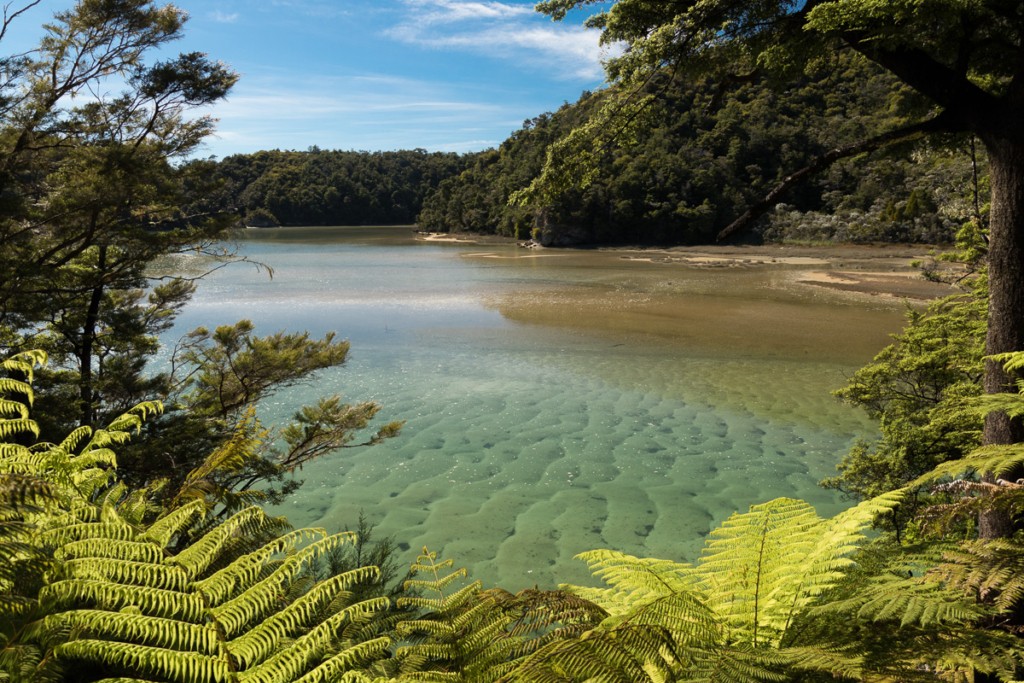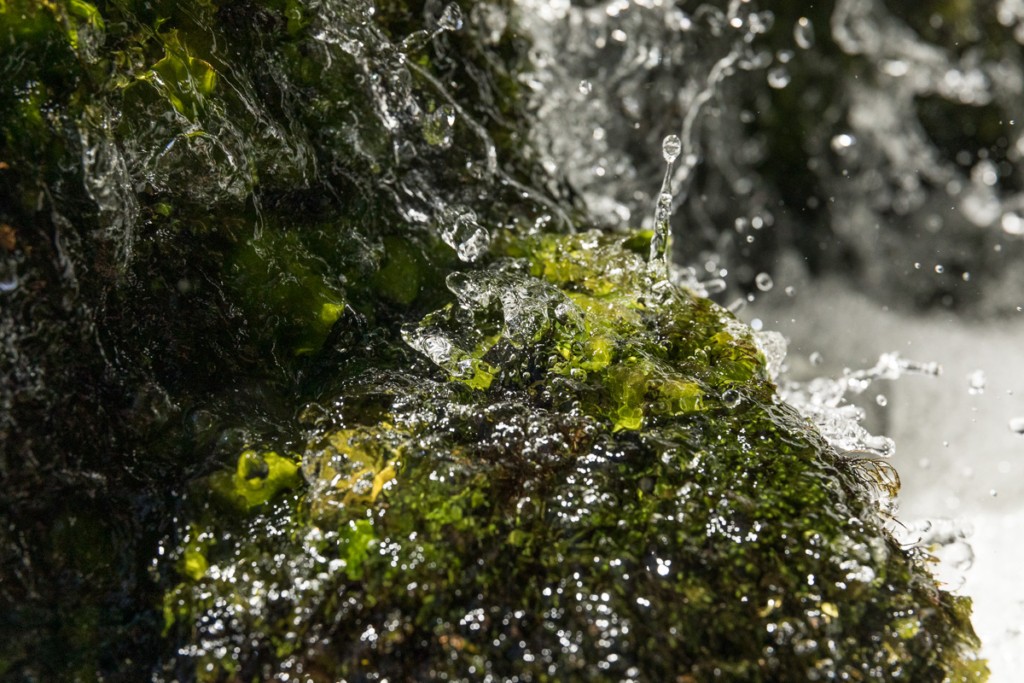Conservation in the Abel Tasman National Park is increasingly being recognised nationally as an ecological success story. This includes the assisted regeneration of the native flora and fauna over the past twenty-plus years.
Attempts by humans to farm the land, mill the trees and quarry the granite from the area in the late 1800s and in the first half of the 1900s had left their mark. When the area became a national park in 1942 and then other parcels of land were purchased and ceded into the Park over time, these activities were no longer possible and instead, the entire area became an increasingly popular recreational area for local residents as well as for domestic and international visitors.
One of the reasons the flora and fauna has regenerated so strongly in more recent times is that the most significant stakeholders, the local community, iwi, DOC, environmental groups and the commercial operators have found a way to work together for a common good. The key to this success is that despite those groups often having differing viewpoints and priorities, the overall goal, to protect and improve the Abel Tasman’s flora and fauna, is common for all stakeholders. This cooperation between commercial interests, government, mana whenua, and the New Zealand public is a potential blueprint for achieving similar environmental outcomes in the rest of the country.
If you are prone to reading some of the comments on social media and New Zealand’s news websites you might come across people talking about how places like the Abel Tasman have been ruined by ‘unregulated mass tourism’ and ‘greedy tourism operators who put money before anything else.’ For me, this is an example of a small but vocal group of people speaking with authority and assurity about something for which they actually have very little, if any, practical knowledge or experience. I would be completely shocked if any of the people venting these opinions via their keyboards have actually visited the Park recently or know what it was like even twenty years ago. For anybody who does have a long association with the Park, you don’t have to cast your mind back too far to picture the wilding pines that stood out among the natives throughout the Abel Tasman, or the bare, bush-less patches along some of the ridgelines and elevated areas.
The Bird Song Trust & Project Janszoon
Today, you will need to be paying close attention to find a wildingly pine in the entire Park and even the dead and dying trunks of the pines that were left standing along the coast have, as was intended, fallen and rotted where they once stood. The eradication of the wilding pines and subsequent regrowth of the native bush where these exotics formerly stood is perhaps the most visible improvement to the state of the Abel Tasman forest.
The organisation responsible for conceiving and implementing this million dollar, multi-year project is the Abel Tasman Birdsong Trust. Established in 2007, the stated vision of this charitable trust is “that the forests and beaches of the Abel Tasman National Park are once again filled with the birdsong that awakens and delights visitors.” The Birdsong Trust’s other projects include predator control along the coast, planting and maintenance of native trees and the reintroduction of some native bird species such as the South Island Robin/Toutouwai and Saddleback/Tieke. The Birdsong Trust maintains a network of over 1,200 traps along the coast from Mārahau to Awaroa and more recently inland in the Falls River and Moncrieff Reserve areas. Since it was established, the Birdsong Trust has received a voluntary fee from every commercial operator in the Abel Tasman for each customer using their services. In fact, there are currently 27 privately owned businesses listed on the Trust’s website as members or associate members.
The Birdsong Trust has then taken the contributions from commercial operators, and has used it as co-funding to get grants from charitable funds such as the NZ Lotteries Grants Board, the DOC Community Conservation Partnership Fund, Pub Charity and the Lion Foundation. The other major factor that helps the Birdsong Trust achieve all of these wonderful things for the Park is the size and strength of its volunteer base with hundreds of locals doing the work required. The water taxi companies operating in the Park transport the Trust’s volunteers around the Park at no charge, which stands to reason. The people actually out there doing this work are actively improving the ecology of the Park and this work improves the experience for the commercial operator’s own customers. And for the volunteers themselves, many of whom have retired from their day-jobs, they genuinely enjoy their time outdoors doing work that is clearly having a positive impact. This whole arrangement really is a win-win-win.
Project Janszoon is the other organisation that has had a phenomenal impact on the improvements to the ecology of the Abel Tasman. Launched in 2012 with the generous support of New Zealand couple Neal and Annette Plowman, Project Janszoon was unique in that it was the first time philanthropists had offered to partner with a government department to restore the ecology of a national park. Project Janszoon’s stated aim is “to restore and preserve Abel Tasman’s rich wildlife for all to enjoy. It is a team effort involving conservationists, iwi, locals scientists, tourism operators and volunteers.” Since its establishment ten years ago, Project Janszoon has worked closely with DOC and the Birdsong Trust to rid the Park of pests and weeds, bringing back native birds and bush, and inspiring a culture of care for Abel Tasman. Project Janszoon does a huge amount of work with school and community group education and also does an excellent job of communicating the progress of these environmental initiatives to the New Zealand public. At the time of writing, Project Janszoon had already trapped 43,827 rats and 2,420 stoats and weasels. Since 2014 it has also translocated kākāriki, kākā, tieke/saddleback, pāteke/brown teal and whio/blue duck into the Park. Project Janszoon has also planted 43,260 natives at Hadfield Clearing and 787 rātā between Bark Bay and Awaroa.
The Abel Tasman Birdsong Trust maintains a network of over 1,200 traps along the coast from Mārahau to Awaroa.

Just imagine, if you can, the Abel Tasman being a place where it is commonplace to spot kiwi scuttling about looking for their evening meals.

The best example I can cite of the traditional ‘us and them’ mindset in which you have commercial interests on one side of the divide and DOC on the other, is our recent attempts to push for more areas of the Park to be opened up for cyclists. At the current time, cycling is only permitted in the Abel Tasman at a small part of Canaan Downs and Gibbs Hill to the
north of the Park. The intention here is not to open the existing Coast Track to cyclists but to either up grade the Inland Track for cycling or to build a brand new track between the Coast Track and the Inland Track. As well as providing excellent opportunities for us as commercial operators to lure more visitors to the area, particularly during the winter months when typically we have very few people visiting, is that it will provide another easily accessible predator trapline. While the area along the Abel Tasman coast continues to be extensively trapped, an easily accessible trapline further up the park will provide another layer of protection. Anybody who has ever done any bush bashing at all will attest to the fact that crawling, scrambling, and wrenching yourself through thick bush is exhausting in itself, and checking traps in this type of country without a well formed ground track is simply unsustainable for anyone. A track capable of being cycled would allow access to set and maintain a whole network of traps the length of the Park. There are currently two major roadblocks for this plan. Firstly, the Abel Tasman National Park Management Plan, which is currently four years overdue for its ten year review, forbids cycling in the Park aside from the two small areas mentioned above. When she was the Conservation Minister, Labour MP, the Hon Kiritapu Allan began the process “to improve management planning and concession processes in conservation legislation” because “a significant proportion of the almost 40 conservation management strategies and plans, and national park management plans are overdue to be reviewed and no longer
reflect what local communities want, or the latest environmental science. That has led to frustration across the board.”
She also stated “Part of that tension is because guidance or limits on specific activities, like mountain biking or aircraft landings, cannot be easily updated to reflect changes in how people want to connect with and use conservation land and waters.” The intention here was clearly to pave the way for some long overdue reforms.
The other potential handbrake to this cycle trail plan is navigating the opposition of special interest groups such as the Federated Mountain Clubs of New Zealand (FMC). The FMCs stance is distinctly anti anything that opens up what it sees as ‘remote areas’ to anyone not accessing those trails on foot. When initially consulted on the idea of opening the Evan’s
Ridge track to cycling the FMC replied by stating “The development of a mountain bike trail on Evans Ridge would be to the direct detriment of visitors seeking a remote experience in the park’s interior, and is thus something we cannot support.” While it is totally understandable that the FMC’s perspective would be this way, if the Park’s Management Plan is updated to include biking, and they are open to the other upsides from a commercial and predator control point of view,
hopefully they won’t stand in rank opposition to it. Similarly, there will need to be a lot of work done to nullify some of the opposition from local residents who, with the mere mention of mountain biking in the Abel Tasman can begin a chorus of boos and hisses. Quite understandably, the image of lycra-wearing mountain bikers hurtling along the tracks in the Abel Tasman fills many locals, particularly those with multi-generation bachs in the Park, with dread. Another thing that raises the blood pressure of locals is the idea of more people visiting the Park during the winter months which is when they typically have the entire Park to themselves. It has been more difficult to explain that while some people might love the idea of having the entire Park largely to themselves in July, it’s a little bit selfish to then exclude visitors from enjoying it too.
The existence of a mountain biking track through the Abel Tasman is only a piece of the puzzle and it will not, in isolation, be the making or breaking of the ongoing restoration success of the Abel Tasman or the businesses of the commercial operators. But it is an excellent example of what could be achieved if the vested interests of these commercial operators,
environmental groups, DOC, iwi and the local community can be balanced to achieve a good outcome for all. This all requires genuine engagement between the different stakeholders, not ‘consultation’ which has traditionally involved the party wishing to implement change of one form or another simply ‘consulting’ the other stakeholders. This consultation amounts to listening to objections from other stakeholders and then doing what they intended to do right from the outset anyway. Instead, ‘engagement’ involves just that. Engaging with, listening to carefully and negotiating a solution that, while it may not be exactly what any specific group wanted as its most preferred outcome, is something they are prepared to work with moving forward
The improvements to the ecology and biodiversity achieved in the Abel Tasman over the past twenty-plus years has been wonderful to be part of. But there is much work to be done not only to maintain this progress but also to continue the momentum. Just imagine, if you can, the Abel Tasman being a place where it is commonplace to spot kiwi scuttling about looking for their evening meals.
Blog by Brendan Alborn
Owner Operator
Brendan has a long association with the Abel Tasman, visiting it for the first time when his parents moved to Marahau in 1997. After spending much of his life overseas, Brendan and his family moved to the area at the end of 2010. When Brendan is not spending his time in the outdoors he seems to spend much of his time creating even flimsier justifications for spending more time in the outdoors.

